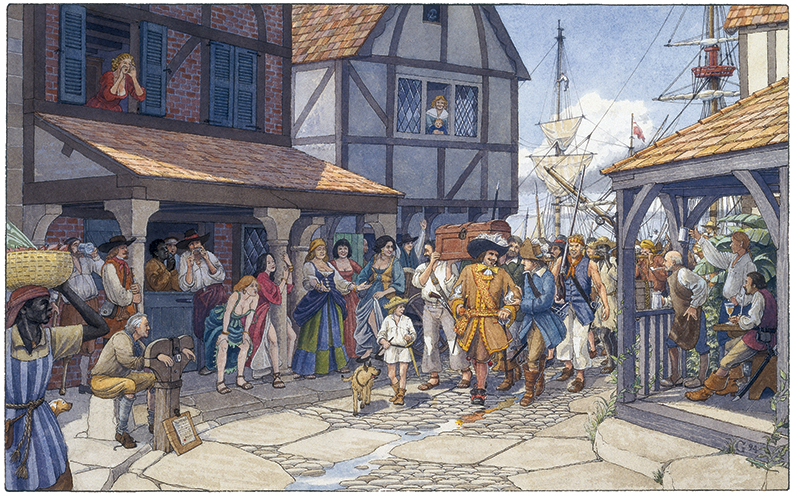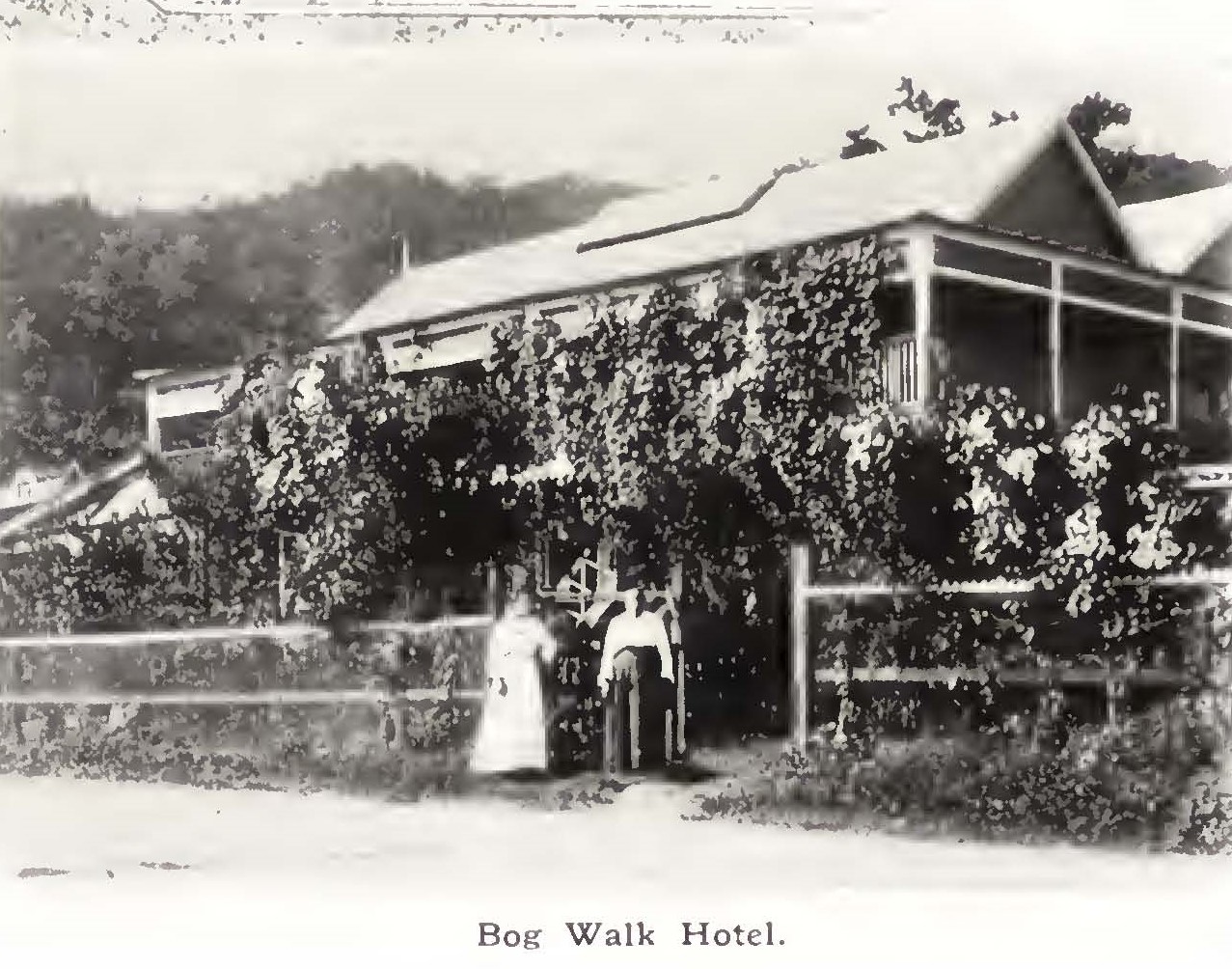Sex trafficking has become an issue of global concern. Even in western countries such as the United States, young girls and even grown women are being kidnapped or lured into a life of forced prostitution. For women of African descent in the Americas – North, Central and South America and the Caribbean – violent and forced sexual exploitation is centuries old. Chattel slavery was nothing if not that.
Prostitution is as old as human society, the oldest profession they say. Prostitution in Jamaica is no different. While much is not known on what transpired during the time of Spanish colonization, prostitution on the island took off in a big way in the 17th century with the founding of Port Royal.
Port Royal – hive of prostitution
“Port Royal prospered on the back of its pirate economy, and by the 1660s its streets were lined with taverns and brothels eager to cater to the whims of young buccaneers flush with Spanish loot,” noted Evan Andrews. There was the “seamy harbor overrun with gambling, prostitution and drink, where hard-living mariners often squandered thousands of Spanish reals in a single night.”
John Appleby said:
By 1670 it (Port Royal) was identified by godly observers as a latter-day Sodom, sustained by pirate booty, with an unruly culture of taverns, punch houses and brothels. …Some men were willing to pay exorbitant sums of money merely to see a woman naked.
A.L. Bancroft, writing in 1883, described the behavior of pirates in Port Royal after one of their seafaring exploits:
Proceeding thence to Jamaica, they squandered in riot and gross dissipation the wealth that others had accumulated by years of toil and self-denial. A few days of swinish debauchery among the wine-shops and brothels of Port Royal left the majority of the gang without means or credit, and clamorous for some new expedition.

These pirates were doing in Jamaica what they did in their home country, Britain. They simply transferred to the colony what occurred in the motherland, perhaps on a grander scale, fueled by ill-gotten gain. In The Secret History of Georgian London, Dan Cruickshank asserted:
As many as one in five young women were prostitutes in 18th-century London. The Covent Garden that tourists frequent today was the centre of a vast sex trade strewn across hundreds of brothels and so-called coffee houses. Fornication in public was common and even children were routinely treated for venereal disease.
Cruickshank said further:
English society expected, even encouraged, men to pay for sex. Prejudice barred women from all but menial jobs. Prostitution at least offered financial independence: a typical harlot could earn in a month what a tradesman or clerk would earn in a year. For a few beautiful and savvy women, the gamble paid off. Lavinia Fenton, a child prostitute, married a duke. But most prostitutes were destined for disease, despair and early death.
It continued apace in the 19th century. Ronald Hyam said, “at mid-century there were almost certainly more brothels in London than there were schools and charities put together.” Estimates were that London alone had about 80,000 prostitutes during the 1860s, some West Indians among them.
Prostitution was a way of life in venerable London.
Widely practiced prostitution in the United Kingdom led to epidemics in sexually transmitted diseases; serious enough that the British parliament passed the Contagious Diseases Acts in 1864 with subsequent reenactments, alterations and new editions in 1866 and 1869. The acts were aimed at combating STDs in the British armed forces. The legislation empowered the police to arrest women suspected of being prostitutes at the various harbors and ports and have them checked for STD infection.
By the 1880s, the Contagious Diseases Acts were extended to cover British colonies, including Jamaica. “The Contagious Diseases Acts were in force in Jamaica, Trinidad, Hong Kong, Fiji, Gibraltar, Malta, India, Burma, Ceylon, the Australian colonies, Malaya, and the Cape (reenacted there in 1885), and in Cairo,” noted Philip Howell of the University of Cambridge in the UK.
This suggests that prostitution continued in Jamaica and did not end with the demise of Port Royal after it was leveled by the massive earthquake in 1692 and almost wiped out by the great fire of 1703. Prostitution followed newer cities and towns, especially those with harbors. Ships, harbors and ports were major draws. The port towns of Kingston, Montego Bay and Falmouth were hotbeds of prostitution.
Slavery and prostitution
In slave societies, Jamaica included, one sees the intertwining of enslavement and the purveying of sex for sale. One of the most intriguing characters in James McBride’s historical novel, The Good Lord Bird, is Pie, a prostitute. The novel centers on the tragic figure of the abolitionist, John Brown, who sought a violent overthrow of American slavery. It took me awhile to realize that Pie was enslaved because she commanded and insulted and cursed her clients, all white men. She held them in the palm of her hand and she could do or say almost anything to them, for she was the prized prostitute in the tavern/saloon that doubled as a brothel. It was only her mistress, who owned her, and the saloon’s enforcer, to whom she showed any respect.
That image of Pie may reflect the reality of some enslaved women in Jamaica and elsewhere. For the most part, black enslaved women were raped, sexually exploited and dominated by white men. But those who knew the power of what they had could be like a Pie. Again, not unlike the young, teen aged Kitty, the mistress and partner of the overseer in Andrea Levy’s The Long Song. Again, the beautiful Dulcimina in Marlon James’ The Book of Night Women comes to mind. Though not a prostitute, Dulcimina’s beauty and her wit gave her a sort of power other enslaved women did not have.
How much power did sexually attractive, savvy and witty enslaved women wield? The evidence strongly suggests that, like Pie in The Good Lord Bird, owners hired out enslaved women to offer sexual favors. This is an aspect of slavery one rarely reads about. In an article in the Journal of Caribbean History, Brian Moore and Michele Johnson cited sources that said “prostitution in the British Caribbean dates back to the days of slavery when female slaves were hired out to provide sexual services” and “that prostitution did exist in the urban centres of the Caribbean during the period of slavery.”
Moore and Johnson said further:
After emancipation women formed a large part of the migration from the rural areas to the towns, and as employment opportunities in domestic service, seamstressing, washing and other “female occupations” declined in relation to the supply of labour, some women were probably obliged to sell sexual services to survive.
In addition:
Girls, even as young as twelve years of age, were also recruited into prostitution by persons, usually women, who provided them with shelter and sustenance. But there may have been an element of choice as well, for as the Jamaica Times noted, some women who started out as domestic servants, dressmakers and the like eventually gave up those jobs to become prostitutes.
Dawn Michelle Miles, in her 2010 Ohio State University master’s thesis on the experience of female enslavement in the Caribbean, wrote:
Black women in the late 1700s-mid 1800s regularly utilized prostitution, and their sexuality more generally, as a means to gaining their freedom. When prostitution became widespread in 1802, the manumission rates among black women began to steadily increase. Black women prostitutes asserted their agency by choosing to use their sexual exploitation they faced at the hands of Europeans as a means to gain their freedom.
The conclusion is controversial and contentious but was apparently true. Many black women were sexually exploited, but some used their sexuality to empower themselves.
A more venerable form of prostitution, if there is such a thing, was practiced, or allowed, by operators of lodging houses. In the Caribbean, Jamaica included, most of these lodging houses were operated by mulatto or mixed race women. Some were reportedly the mistresses of white men who, in addition to providing lodging to travelers, offered sexual favors as well, whether they did it themselves, or allowed others to offer such services on their premises.

These lodging houses were not brothels, not in the usual sense of the word, but places where visitors stayed who arrived by ships in port towns such as Kingston, Falmouth and Montego Bay. In an article titled Victims or Strategists? Female Lodging House Keepers in Jamaica, Paulette Kerr named 18 such lodging houses that existed in 1878 in what is now Downtown Kingston, almost all operated by mulatto or mixed raced women. The lodging houses existed along with more traditional brothels, which Kerr claimed were operated mainly by free black women.
Inland lodging houses catered mainly to government workers, military officers, merchants and others who traveled from one part of the island to another. The more well-known inland lodging houses were in places such as Bog Walk in St. Catherine and Moneague in St. Ann, where travelers overnighted on their way to or from Kingston and the north coast.
Kerr found that in one year, 1847, such female lodging housekeepers earned about £150, a princely sum for that time, more than that earned by clerks, retailers and master mariners. Operators of these lodging houses had a level of freedom and financial independence that few other women of their ethnicity and status had.
Prostitution today
In modern Jamaica, prostitution is widely practiced in Kingston and other major towns, especially the tourism centers of Montego Bay, Ocho Rios and Negril. Night clubs, especially the go-go variety, and assorted massage parlors, peddle sexual services. While many females in these establishments and elsewhere may do so voluntarily, Jamaica is not immune from the modern slave trade that induces mainly young women and girls into prostitution.
The US Department of State Bureau of Democracy, Human Rights, and Labor alleged that in Jamaica “trafficking in women for prostitution continued to be a problem” and that “child prostitution and trafficking for the purpose of sexual exploitation were problems.” The same report claimed that Panamanians were being trafficked into the country. I’ve heard tales of Cubans as well.
No country has been able to eliminate prostitution. Highly conservative countries and cultures that impose severe restrictions on women’s freedoms rarely succeed as it institutionalizes the power of men over women and girls to an extreme degree, leading to widespread sexual exploitation. Countries such as the Netherlands and the Dominican Republic with laissez faire policies toward prostitution have not seen reductions in sexual exploitation and the sex trade.
Prostitution is as intractable as any other vice. So long as there is demand, there will be supply.
Eron Henry is author of Reverend Mother, a novel